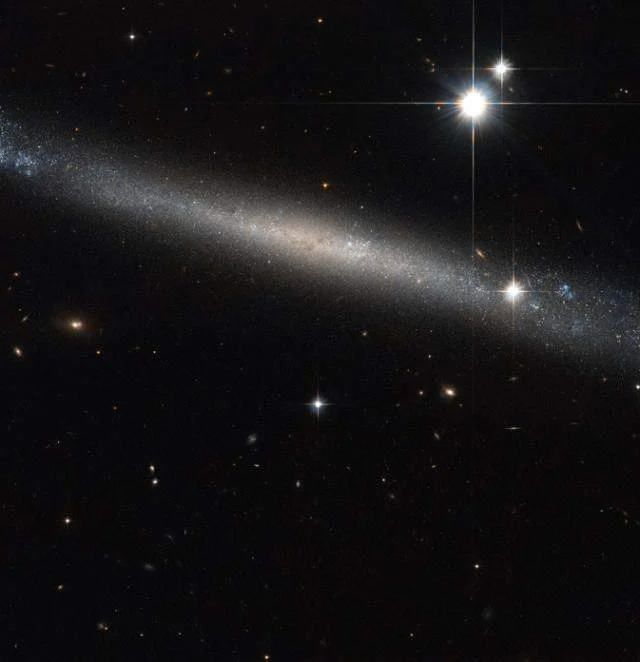Much like locating a silver needle in the haystack of space, NASA’s Hubble Space Telescope recently produced this beautiful image below of the spiral galaxy IC 2233, one of the flattest galaxies ever observed by astronomers.

Typical spiral galaxies like the Milky Way typically comprise three primary visible components: the disk where the spiral arms and most of the gas and dust is concentrated; the halo, a rough and sparse sphere around the disk that contains little gas, dust or star formation; and the central bulge at the heart of the disk, which is formed by a large concentration of ancient stars surrounding the Galactic Center.
However, IC 2233 is far from being typical. Indeed, this object is a prime example of a super-thin galaxy, where its diameter is at least ten times larger than the thickness. These galaxies consist of a simple disk of stars when seen edge on.
This orientation makes them particularly fascinating to study, offering another perspective on spiral galaxies. An important characteristic of this type of objects is that they feature a low brightness and almost all of them have no bulge at all.
The bluish color that can be seen along the disk offers some evidence of the spiral nature of the galaxy, indicating the presence of hot, luminous, young stars, born out of clouds of interstellar gas.
In addition, unlike typical spirals, IC 2233 shows no well-defined dust lane, as only a few small patchy regions can be identified in the inner regions both above and below the galaxy’s mid-plane.
Lying in the constellation of Lynx, IC 2233 is located about 40 million light-years away from Earth. This galaxy was first discovered by British astronomer Isaac Roberts in 1894.






